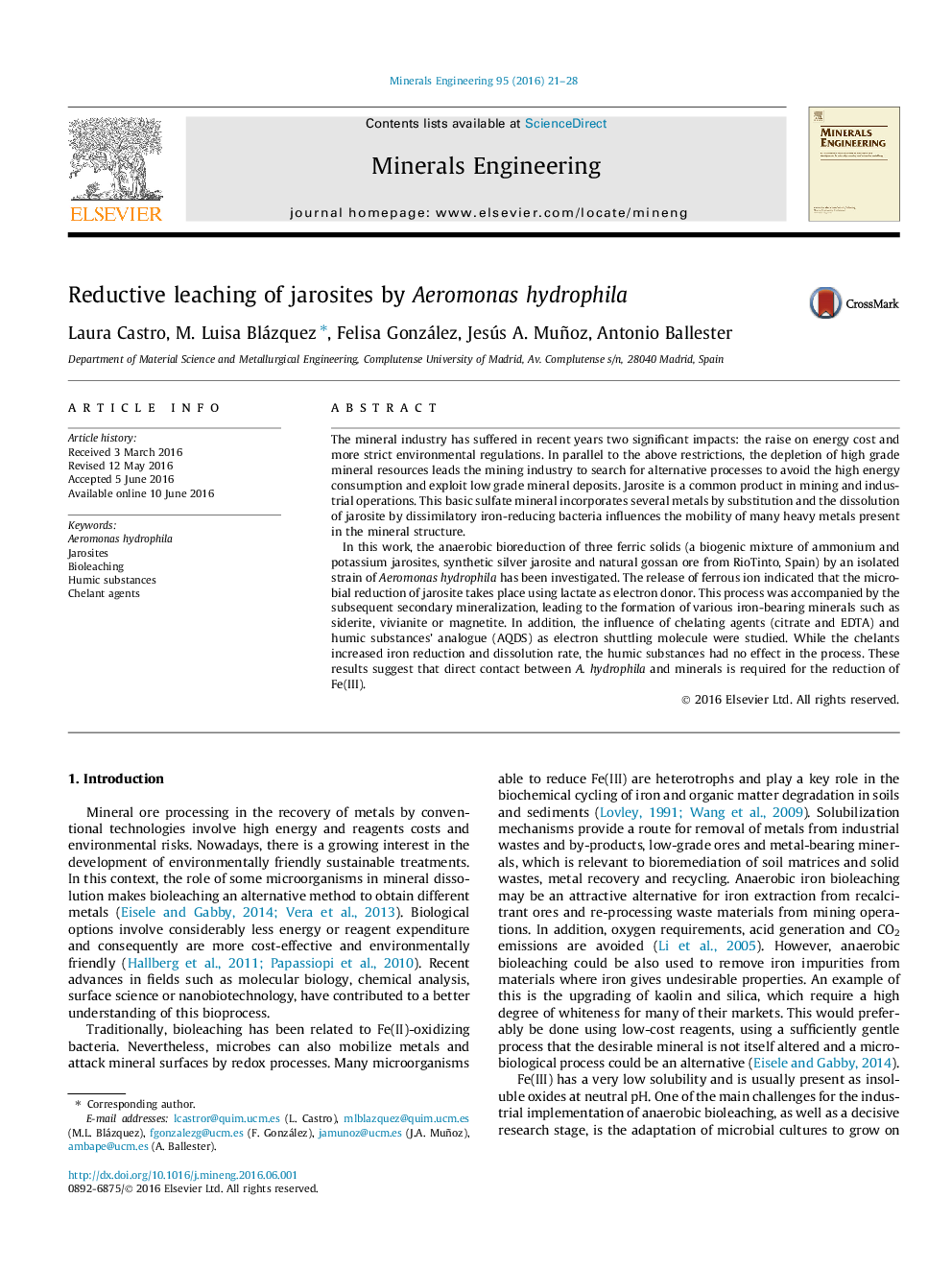| کد مقاله | کد نشریه | سال انتشار | مقاله انگلیسی | نسخه تمام متن |
|---|---|---|---|---|
| 232706 | 465299 | 2016 | 8 صفحه PDF | دانلود رایگان |

• A. hydrophila CECT 8424 was able to reduce and dissolve jarosites.
• The composition of the jarosites influences the bioreduction extent.
• Semi-continuous experiments reached a higher bioleaching yield.
• Humic substances (AQDS) do not increase the Fe(III) reduction rate.
• The addition of citrate and EDTA enhances the bioleaching of jarosites.
The mineral industry has suffered in recent years two significant impacts: the raise on energy cost and more strict environmental regulations. In parallel to the above restrictions, the depletion of high grade mineral resources leads the mining industry to search for alternative processes to avoid the high energy consumption and exploit low grade mineral deposits. Jarosite is a common product in mining and industrial operations. This basic sulfate mineral incorporates several metals by substitution and the dissolution of jarosite by dissimilatory iron-reducing bacteria influences the mobility of many heavy metals present in the mineral structure.In this work, the anaerobic bioreduction of three ferric solids (a biogenic mixture of ammonium and potassium jarosites, synthetic silver jarosite and natural gossan ore from RioTinto, Spain) by an isolated strain of Aeromonas hydrophila has been investigated. The release of ferrous ion indicated that the microbial reduction of jarosite takes place using lactate as electron donor. This process was accompanied by the subsequent secondary mineralization, leading to the formation of various iron-bearing minerals such as siderite, vivianite or magnetite. In addition, the influence of chelating agents (citrate and EDTA) and humic substances’ analogue (AQDS) as electron shuttling molecule were studied. While the chelants increased iron reduction and dissolution rate, the humic substances had no effect in the process. These results suggest that direct contact between A. hydrophila and minerals is required for the reduction of Fe(III).
Journal: Minerals Engineering - Volume 95, September 2016, Pages 21–28